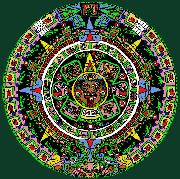Ruth (neé Deutch) was born in Vienna, Austria.
In 1939, at the age of 19, she emigrated to Mexico with her family,
studied medicine in the National Autonomous University, eventually
became a naturalized Mexican citizen, and married.
Her fascination with crafts first came about as
the result of her father’s deep interest in archaeology. Shortly after
the family’s arrival in Mexico they began traveling to pre-Hispanic
sites throughout the country. Ruth found that her interests were more
people oriented, and the indigenous communities, their festivities – a
Huichol rainmaking ceremony, Holy Week with the Cora Indians of Nayarit
-- and markets held an irresistible attraction for her, more so than the
vestiges of ancient civilizations. "At first," she recalls,
"I began buying what I liked and what I could afford. One of my
first purchases was a piece of beautifully burnished ochre-colored
pottery that I found in Ocotlán, Tlaxcala.
Then I started buying textiles, mainly to wear.
At the time I couldn’t tell the difference between weaving methods, I
could only appreciate the beauty of an embroidered blouse. But over the
years I learned about the art behind the pieces, and that helped me
appreciate the mastery of the techniques."
Little by little, Ruth’s treasures began to
overtake her home…and her life. After completing medical school, she
worked in a laboratory and later opened one of her own. She divided her
time between her business and her travels, but her interest in
handicrafts became too absorbing and she left the lab to the people who
worked for her in order to devote herself full time to her passion for
crafts. Her family’s move to their first apartment in the Edificio
Condesa, in 1956, gave her more room to collect. But it wasn’t until
she was able to obtain a connecting apartment that she decided to open
her treasures to the public.
"I don’t collect simply to
collect," explains Ruth. "I am attracted to well-crafted
pieces because I know how much work has gone into them. I want the
collection to be useful, to demonstrate this country’s many roots.
This is the real Mexico and the collection is an adventure in learning
about the country. I also want the collection to trace the evolution of
these crafts in as much detail as possible: how they change without
being lost. I go back to the same places and see changes. I’m always
impressed by how things never disappear, but simply evolve." Ruth
views the transformation as a fascinating process because it speaks of a
vibrant culture that changes with the times and borrows from other
cultures what it deems worthwhile without allowing its own heritage to
disappear.
Ruth doesn’t want the collection to be broken
up or to leave the country. "That is why," she explains,
"several years ago, I decided to create a trust, so that even when
I am no longer around it will be able to remain here and be part of
Mexico’s cultural and artistic heritage."
In total, Ruth’s collection numbers about
10,000 items. Almost all have been meticulously catalogued. Closet
shelves are piled high with about 2,000 pieces of textiles, some
intricately embroidered, each carefully wrapped in acid-free tissue
paper and divided by states, ethnic groups and towns. Over 1,200 masks,
each with a unique story to tell, copper pots, ceramic plates, jewelry,
miniatures, lacquered gourds, seed, yarn and feather
"paintings," baskets, paper cut-outs, filigree wax altars, and
trees of life are displayed on every inch of available space. They rest
on tables, hang from ceilings and doors, and line shelves and floors. A
macabre, yet enchanting collection of Day of the Dead art – skulls and
skeletons made of papier-mâché, candy and clay – keep her company in
her vivid, Mexican pink bedroom. Many of the pieces were acquired on
travels to towns and villages in jungles, deserts, coasts and highlands,
at religious ceremonies, crafts competitions, directly from the
artisans, or at local markets.
"This collection is a testimony to the
hard work and imagination of Mexico that reflects the character of its
creators," she explains. "Although it is important to know how
to distinguish between what is produced to serve a utilitarian or
cultural function and what is made expressly to be sold, the point is
not to judge a piece’s value based on that knowledge: in the end, the
sale of these objects means a livelihood for the artisans."
Ruth is still looking toward the future. Her
long-time dream of expanding her collection into yet a third connecting
apartment has finally come true. More wall and floor space, she says
"will allow me to display the pieces more effectively, to be able
to separate the masks, for example, by state and region, to display more
of the textiles, and also make it easier for visitors to walk around and
appreciate the works as individual pieces."
Although she insists that she doesn’t have a
"favorite piece" – in fact, she seems quite disconcerted
that anyone would ask that question – she points out that her passion
has always been textiles and masks: textiles, for their beauty and the
amazing amount of work behind them, and masks, because of the
significance of the dances for which they are used. "It is not a
piece’s beauty or its age, uniqueness or value that make it especially
precious," she explains, "but rather my own memories of the
circumstances in which it was acquired."
In one corner of the museum/apartment is a
table on which her publications are displayed. In her typical,
self-effacing way, Ruth calls it "my ego altar."
Ruth Lechuga is an inspired teacher who loves
to share her information. Her personally guided tours, which cost $15
dollars per person, include fascinating stories and insight into Mexico’s
indigenous cultures. Tours are given in Spanish or English, by
appointment only. Tel. (525) 533-5538.

